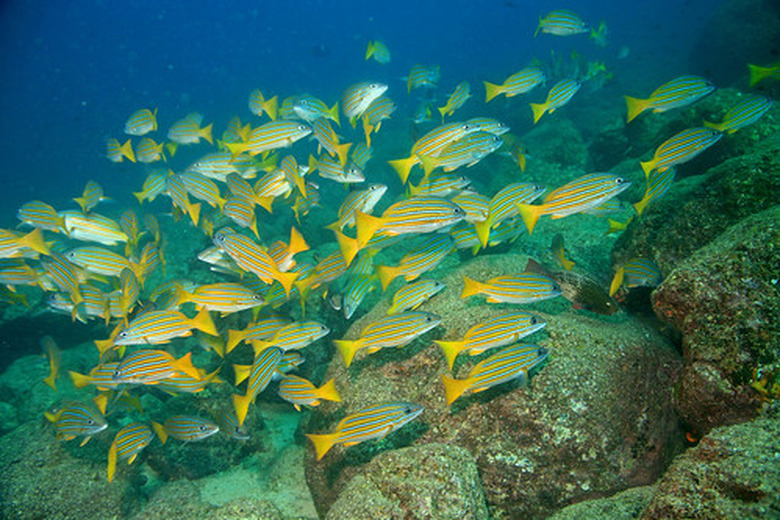What Types Of Soil Are In The Ocean?
The ocean floor is composed of three different types of soil, known as pelagic sediments or marine sediments. They include calcareous ooze, red clay and siliceous ooze.
The Ocean Floor
The Ocean Floor
The ocean floor is made up of mountains, valleys, plains, plateaus, islands, ridges and volcanoes. The Earth's floor below the ocean is very similar the that above the ocean.
Ooze vs. Clay
Ooze vs. Clay
Ooze is made up of debris from living organisms; any soil composed of more than 30 percent organic debris is classified as ooze, making it a biogenous sediment. Red clay is not organic; it's made of rock and is considered lithogenous sediment.
Calcareous Ooze
Calcareous Ooze
Calcareous ooze is the most common of the three soils and covers approximately 48 percent of the ocean floor. It is composed of the shells of foraminifera, coccolithophores and pteropods, which are tiny organisms living in the ocean.
Red Clay
Red Clay
Red clay covers approximately 38 percent of the ocean floor and is brown. It is made up of quartz, clay minerals and micrometeorites, which are rocks that weigh less than a gram and have fallen to Earth from outer space.
Siliceous Ooze
Siliceous Ooze
Siliceous ooze is the least common of the three soils, covering approximately 15 percent of the ocean floor. It is composed of plankton debris and silica shells.
Cite This Article
MLA
Contributor, . "What Types Of Soil Are In The Ocean?" sciencing.com, https://www.sciencing.com/types-soil-ocean-5597489/. 24 April 2017.
APA
Contributor, . (2017, April 24). What Types Of Soil Are In The Ocean?. sciencing.com. Retrieved from https://www.sciencing.com/types-soil-ocean-5597489/
Chicago
Contributor, . What Types Of Soil Are In The Ocean? last modified March 24, 2022. https://www.sciencing.com/types-soil-ocean-5597489/
